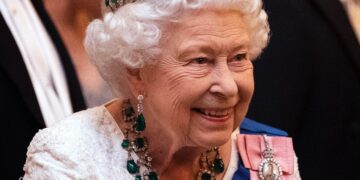Kenya’s President William Ruto has nominated key allies of main opposition leader Raila Odinga to his cabinet, in the latest move to quell growing dissatisfaction with his government.
He gave four posts to the opposition – including the powerful finance and energy ministries.
This is the first time the opposition will serve in government since Mr Odinga took up the post of prime minister in then-President Mwai Kibaki’s cabinet in 2008.
Mr Ruto’s decision comes as he faces the biggest crisis of his presidency, with young people taking to the streets to demand his resignation under the hashtag #RutoMustGo.
The protests, which started last month over a proposed finance bill containing controversial tax hikes, grew in size until parliament was stormed and a part of it set ablaze.
This prompted President Ruto to withdraw the bill, but that has not quelled the anger of protesters, who are also upset by the police’s brutal handling of the demonstrations.
In an address to the nation, Mr Ruto
said he had consulted extensively on forming a “broad-based” government
that would spearhead a “transformational agenda” to make Kenya a
“better, more just and prosperous” nation.
However, protesters have rejected this, saying it merely perpetuates deal-making among Kenya’s political elite.
The four members of the main opposition party, the Orange Democratic Movement (ODM), who have joined the cabinet are:
- John Mbadi (finance, referred to as treasury in Kenya)
- Opiyo Wandayi (energy and petroleum)
- Hassan Joho (mining and blue economy) and
- Wycliffe Oparanya (co-operatives and micro, small and medium enterprises development).
Mr Ruto made 10 appointments in total, bringing his cabinet to 21. About half of them were in his previous cabinet, further raising the ire of
protesters who are demanding a complete break with the past. Cabinet appointments in Kenya are subject to parliamentary approval, something that is likely to happen as the two main parties have struck a deal.
The ODM was divided over whether to join the government, with some of its members saying it would be a betrayal of Kenyans. Mr Ruto’s critics see his latest decision as an attempt to neutralise the ODM. Some analysts believe the formation of the “broad-based” government could unify people against a single target – a tone-deaf political elite that flagrantly displays opulence. It is unclear why Mr Odinga, 79, did not take up a post, though it may be because he is vying to be the next chairman of the African Union Commission. Mr Ruto became president in 2022 after defeating Mr Odinga in a tightly contested election.
He promised young people greater economic opportunities, but he has lost considerable support among them since his ascent to the presidency. The protests began after complaints that Kenyans could not pay more taxes when they were facing a cost-of-living crisis and there was widespread corruption and wastage in government.
The demonstrations have since snowballed, though on a smaller scale, into calls for Mr Ruto’s resignation, an end to corruption and justice for victims of police brutality. In his speech, Mr Ruto tried to address some of these demands, saying parliament should pass a bill that would deal with conflicts of interest among politicians and officials in order to set a “high bar” on accountability, integrity and anti-corruption measures.
The government would also drop charges against innocent people arrested during the protests, and cases of police abuse would be dealt with quickly, he said. However those involved in criminal activities would be punished, the president added. More than 50 people have died since the protests started. Most of them were shot by the police. Hundreds of others have been injured.
The BBC News















